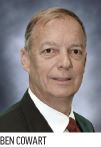Building the world’s largest airport-based solar farm doesn’t come without challenges. But the team developing the new 320-acre, 42-megawatt (MWac) solar farm at Tallahassee International Airport (TLH) prevailed—and also shattered previous records for renewable energy production for airport sited solar farms. When the new facility became operational in January 2020, it joined TLH’s other solar farm that came online in 2018. Together, the two solar farms span 400 acres and produce 62 MWac per year, vaulting the Florida airport well ahead of other industry standouts.
Building the world’s largest airport-based solar farm doesn’t come without challenges. There were lots of moving parts, an aggressive schedule and unexpected environmental and design complications. But the team developing the new 320-acre, 42-megawatt (MWac) solar farm at Tallahassee International Airport (TLH) prevailed—and also shattered previous records for renewable energy production for airport sited solar farms.
When the new facility became operational in January 2020, it joined TLH’s other solar farm that came online in 2018. Together, the two solar farms span 400 acres and produce 62 MWac per year, vaulting the Florida airport well ahead of other industry standouts: Cochin International Airport in India at 40 MWac and Indianapolis International Airport with 17.5 MWac.
TLH’s latest addition, Tallahassee Solar II, was completed after nearly two years of planning, design and coordination by a team that included the airport, the city of Tallahassee’s electric utility department, Origis Energy, Michael Baker International and dozens of contractors and agencies.
|
Project: Solar Farm Addition Location: Tallahassee (FL) Int’l Airport Facility Name: Tallahassee Solar II Size: 320acres, approximately 130,000 solar panels
Annual Output: 42 MWac Development: Origis Energy USA Inc. Funding Entities: Origis Energy USA Inc.; Global Atlantic Financial Group Project Management & Environmental Services: Michael Baker Int’l Inc.
Construction Management & Procurement: Environmental Studies & Permitting: Cardno Solar Construction: Blattner Energy Inc. Medium-Voltage Substation: Beta Engineering Civil & Stormwater Design: Halff Associates Photovoltaic Panel Manufacturer: First Solar Ongoing Operations & Maintenance: Origis Services |
“The city of Tallahassee’s 62-megawatt airport-based solar facility, the largest of its kind, is a testament to our commitment to sustainability,” says Tallahassee Mayor John Dailey. “As the capital city of the Sunshine State, we are dedicated to preserving our community’s natural resources. Utilization of our airport property for the solar farm is part of our innovative approach toward reaching our goal of 100% net clean, renewable energy by 2050.”
Although the team had learned a lot working together to complete Tallahassee Solar I, TLH’s 20-MWac solar farm, several factors made this experience unique—and challenging.
For starters, the terrain of the site was vastly different. Instead of a relatively flat area, they had to contend with hills, two potential sinkholes and wetlands. They also had to tread carefully around protected flora and fauna including the bent golden aster, gopher tortoises and Southeastern American kestrels. The sheer size of the project required the team to add a substation on the property.
Tackling these problems proved to be tricky and time-consuming, but manageable. However, one other massive roadblock took the team completely by surprise—and had the potential to greatly impact the schedule. This issue was a five-week partial federal government shutdown in early 2019, which led to significant permitting delays. This issue was resolved with the help of the FAA Orlando Airport District Office that expedited review of the NEPA document to issue the Finding of No Significant Impact in time to start construction.
Countless Moving Parts
Despite such setbacks, the new solar farm was completed on time. Project members credit the dedicated, collaborative team and one massive project spreadsheet.
 It helped that many of the key players had worked together on Tallahassee Solar I, says David Pollard, director of aviation for TLH. “We had the benefit of that experience and the lessons learned during the building of the first solar farm,” he says. “We were able to move ahead at a lot quicker pace than we might have otherwise.”
It helped that many of the key players had worked together on Tallahassee Solar I, says David Pollard, director of aviation for TLH. “We had the benefit of that experience and the lessons learned during the building of the first solar farm,” he says. “We were able to move ahead at a lot quicker pace than we might have otherwise.”
Mariben Andersen, senior associate and environmental manager at Michael Baker International, was in charge of the vital spreadsheet and many other elements of managing the project, including environmental assessments. When the timing complications came into play, Andersen worked with team members to morph sequential elements into concurrent tasks wherever possible to streamline the schedule and save money.
Those tasks included more than a dozen processes and permitting requirements, including the FAA Environmental Assessment, the Tallahassee Natural Features Inventory, the city Environmental Impact Analysis, and a permit from the Florida Fish & Wildlife Conservation Commission allowing the relocation of gopher tortoises, just to name a few.
 Each task involved subconsultants and coordination with various agencies. That’s when Andersen’s massive spreadsheet often saved the day. “What we learned from Tallahassee Solar I was that there had to be a maestro who knew all the moving parts and who could coordinate,” she explains. “The challenge was to make all of the schedules work together to meet the goals of the project. It was really a collaborative effort.”
Each task involved subconsultants and coordination with various agencies. That’s when Andersen’s massive spreadsheet often saved the day. “What we learned from Tallahassee Solar I was that there had to be a maestro who knew all the moving parts and who could coordinate,” she explains. “The challenge was to make all of the schedules work together to meet the goals of the project. It was really a collaborative effort.”
Pollard took the lead with the FAA requirements, especially from a safety perspective. He says that pulling FAA partners—local, regional and national, when necessary—into the process early and keeping them informed at every step helped facilitate permitting and ultimate project approval.
Meanwhile, Ben Cowart, manager of alternative energy with the city of Tallahassee, handled contract negotiations for three key contracts: the energy purchase agreement with FL Solar 4 LLC, the land lease between the city and TLH and an interconnection agreement, which allows an electric generation source to connect into the city’s electric system.
Optimizing the Array

Although the two solar farm projects at TLH occurred less than two years apart, panel efficiencies improved dramatically since the first project was completed due to rapid developments in solar technology. This particularly came into play for Jason Thomas, director of development for Origis Energy, as he ensured timely procurement of the long lead-time items such as transformers, inverters and panels. Advancements in panel technology resulted in a more efficient use of the land. This efficient design left more room for stormwater to evaporate or percolate into the soil and meet FAA requirements, explains Thomas.
The other major design decision was determining how to angle the panels within each array. Before a single panel was placed, extensive studies were conducted to ensure that the array would not cause glare toward flight paths. The design team used a software program that simulates 365 days of sunshine to determine the safest angle for each of the 130,000 panels that make up the solar array.
A portion of the array faces due south, but not all of the panels are oriented at the optimal angle for energy production. Thomas explains that some portions face southwest to maximize afternoon energy production, which aligns with the utility’s afternoon peak energy demand and also avoids causing glare.
Pollard focused on making sure that the array didn’t add any visual obstructions between the FAA air traffic control tower and runway, and that there was no glare for pilots and/or tower personnel.
“We did a good analysis of that glare and got others to look at it and validate it,” he says. “Until they could demonstrate zero impact, we were not willing to press forward.”
Another safety consideration for on-airport solar facilities is mitigating the risks of an accident and recovery efforts associated with a live electrical field.
Pollard says that TLH is already enhancing its emergency preparedness for such an incident. In February, his team took part in a full-scale mock disaster exercise that included various scenarios involving safely accessing the solar farm. The airport also implemented familiarity training as part of its annual work plan to share essential emergency protocols with new firefighters or airport staff.
Win-Win-Win Situation
The addition of the second solar farm benefits the airport, city of Tallahassee and the environment.
From the airport’s perspective, the solar farm provides a great source of non-aeronautical revenue on what would otherwise be an unused parcel of land. (The city utility leases for the farm from the airport.) “It certainly helps with our overall budget as we try to keep our costs as low and competitive as we can for the carriers,” says Pollard. “Ultimately, they pass costs along to travelers.”
 Cowart notes that the city electric utility comes out a winner because it gets an energy source at a fixed rate, which provides price certainty and fuel diversity.
Cowart notes that the city electric utility comes out a winner because it gets an energy source at a fixed rate, which provides price certainty and fuel diversity.
When Cowart originally presented the plan from Origis for a second solar farm at TLH, the City Commission saw it as a “no-brainer” and quickly gave it the green light. It reduces the city’s carbon footprint, supplies power to 9,500+ homes and further solidifies Tallahassee’s standing as a low emitter at a national level, he explains. And ultimately, the additional airport solar farm supports the city’s transition to 100% clean energy by 2050.

Lessons Learned
Takeaways from Tallahassee Solar I certainly made the construction of the larger second project run more smoothly, and new lessons from Tallahassee Solar II will help guide other airports considering their own solar projects. While each of the contributing entities had varying priorities, their takeaways share some common themes: coordination, collaboration, communication and contingencies.
Andersen, from Michael Baker, says that it was essential to share a big-picture perspective of the project plan and make sure that participants knew when and how their tasks fit into the master plan. “We scheduled several meetings throughout the project and updated an overall project schedule so that tasks that affected or were necessary for the next steps were identified, and the consultants working on them were aware of the importance of meeting their deadlines,” she says.
 Thomas adds that communicating on a regular basis was critical as the team approached what he considers the most nerve-wracking portion of the project. “You’re about to get permits, and it feels like everything is going to be late and you have trucks that are going to show up on a certain date based on those projections,” he relates. “As the permitting and engineering folks communicated with us, we were able to communicate those changes to our supply chain and make sure that we weren’t delivering things to a site that wasn’t ready or permitted.”
Thomas adds that communicating on a regular basis was critical as the team approached what he considers the most nerve-wracking portion of the project. “You’re about to get permits, and it feels like everything is going to be late and you have trucks that are going to show up on a certain date based on those projections,” he relates. “As the permitting and engineering folks communicated with us, we were able to communicate those changes to our supply chain and make sure that we weren’t delivering things to a site that wasn’t ready or permitted.”
The team also advocates for involving agencies early and often so they can help keep permitting processes on track.
Another important lesson: Always expect the unexpected. “In complex projects, I can tell you that if you have a Plan A and a Plan B, you better have a Plan C, because things happen,” Andersen says. “Contingencies are always good.”



 facts&figures
facts&figures

